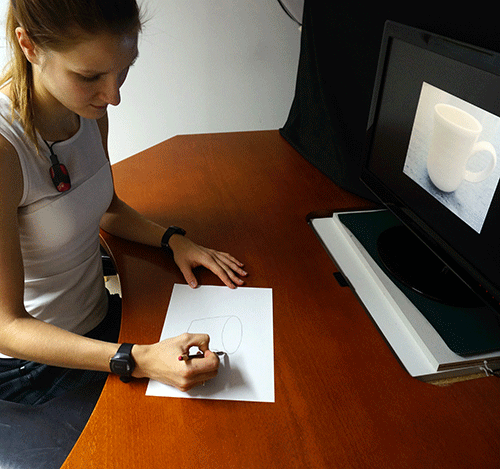How can neuroscience help understand design and craft activity? The promise of cognitive neuroscience in design studies
DOI:
https://doi.org/10.7577/formakademisk.1478Keywords:
craft, design, making, cognitive neuroscience, brain imaging methodsAbstract
Designing and making crafts is a complex, multifaceted process that requires sophisticated, professional thinking and competence, described as reflection in action and as an embodied process in which the hand, eye and mind collaborate. This article discusses these cognitive and embodied aspects central to designing and making crafts in light of cognitive neuroscience. Understanding the specific cognitive processes and forms of knowledge used in creative practices is essential. In this article, we propose that cognitive neuroscience provides valuable tools for analysing thinking and acting processes relevant to designing and making. We discuss the challenges and opportunities that the use of brain imaging methods, in particular, provides for understanding design activities, skills and cognition. Additionally, we present two neuroscientific experimental settings from our empirical studies in which the methods of cognitive neuroscience are applied to study and detect the interrelations between drawing, forming, skill learning and the functional activities of the brain and its subareas. We argue that cognitive neuroscience provides valuable instruments and methods which complement traditional design research.

Downloads
Additional Files
Published
How to Cite
Issue
Section
License
Authors who publish with this journal agree to the following terms:
- Authors retain copyright and grant the journal right of first publication with the work simultaneously licensed under a Creative Commons Attribution 4.0 License that allows others to share the work with an acknowledgement of the work's authorship and initial publication in this journal.
- Authors are able to enter into separate, additional contractual arrangements for the non-exclusive distribution of the journal's published version of the work (e.g., post it to an institutional repository or publish it in a book), with an acknowledgement of its initial publication in this journal.
- Authors are permitted and encouraged to post their work online (e.g., in institutional repositories or on their website) prior to and during the submission process, as it can lead to productive exchanges, as well as earlier and greater citation of published work (See The Effect of Open Access).
- The author(s) must manage their economic reproduction rights to any third party.
- The journal makes no financial or other compensation for submissions, unless a separate agreement regarding this matter has been made with the author(s).
- The journal is obliged to archive the manuscript (including metadata) in its originally published digital form for at least a suitable amount of time in which the manuscript can be accessed via a long-term archive for digital material, such as in the Norwegian universities’ institutional archives within the framework of the NORA partnership.
The material will be published OpenAccess with a Creative Commons 4.0 License which allows anyone to read, share and adapt the content, even commercially under the licence terms:
This work needs to be appropriately attributed/credited, a link must be provided to the CC-BY 4.0 licence, and changes made need to be indicated in a reasonable manner, but not in any way that suggests that the licensor endorses you or your use.



